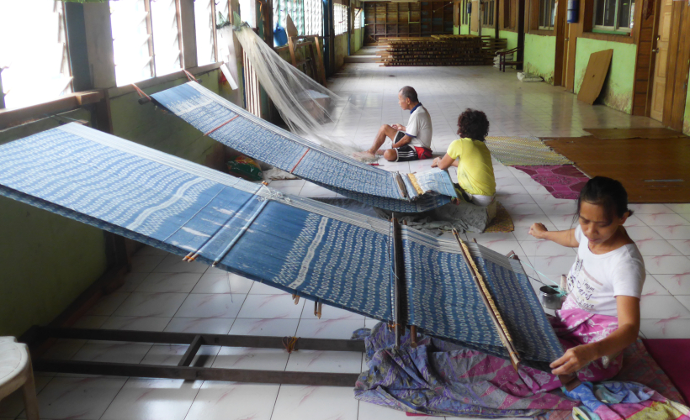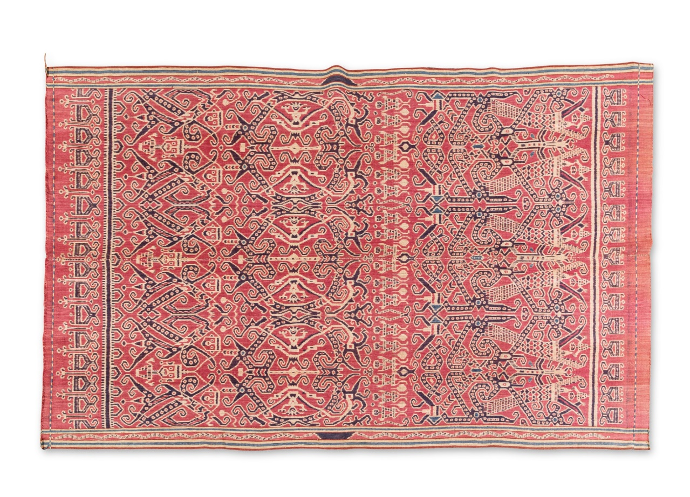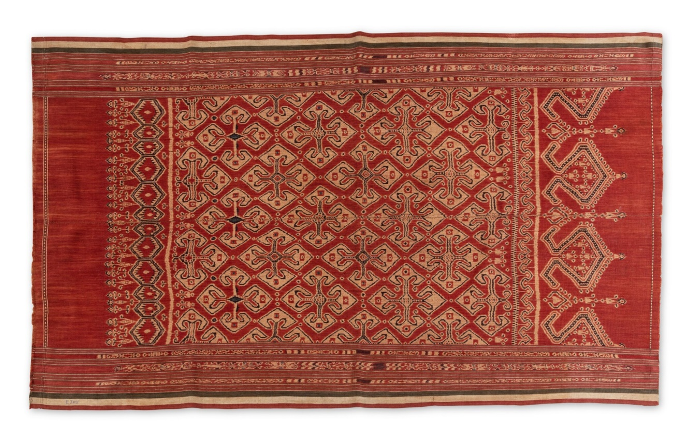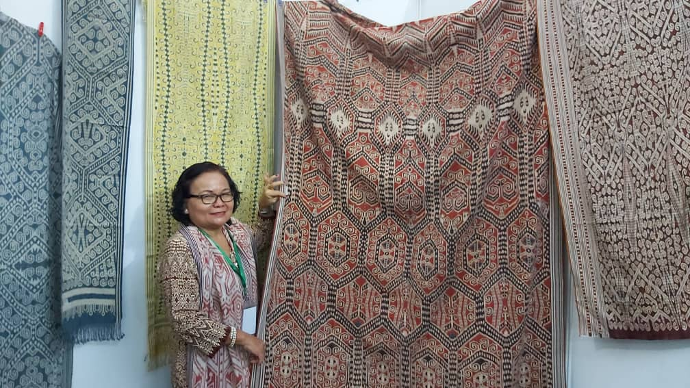Pua Kumbu: Weaving Iban Spirit
The Pua Kumbu. Beautiful, colourful, and magical. It is a textile that is prominent in Iban culture, adorning their clothing and is ever present in all manner of ceremonies. Each pattern is unique to the weaver, as it is taboo for other weavers to imitate others’ designs. The patterns hold moral and spiritual teachings, telling a story that the weaver wishes to pass down. But where do these designs come from?
The Iban community greatly values Pua Kumbu, which is not surprising given its many ceremonial uses and symbolism. Before the weaving even begins, the entire act of preparing the threads through treatment and dyeing is ritualistic in nature. Mixing the dyes and threads into a mordant bath is even taboo except for a few select women.
Part of the ritual includes the weaver cleansing themselves before starting on the piece. A large amount of cleansing is done to the threads by soaking them in specific mixtures that would also treat the threads to make it suitable for weaving. Even the surrounding area would be cleansed, raw eggs are used on the entrance followed by prayers and ritual chants to chase away evil spirits.
The textile is made out of cotton, with fibres and dyes from the surrounding forest. Dye recipes are something that is fiercely guarded by the weavers. Like one’s cooking, the final product is unique with personal touches that identifies the weaver based on pattern, colour and even the quality of the fabric.
When it is finally time to weave, large wooden frames which are part of the loom are attached to the far side of the longhouse walls. The women would be sat on the ground facing the wall, with the other end of the loom resting on their lap. When the weaving begins, the initiation of the threads must be precise. It is believed that any gaps in this segment of the weaving symbolises bad omen for the entire community.
Pua Kumbu is still prevalent in modern Iban culture, being sold openly in shops for anyone and everyone to buy. The prices depend on the intricacy of the design and quality of the fabric. Examples of heritage Pua Kumbu are displayed at the Sarawak Textile Museum and in the Tun Jugah Foundation’s private collection, both in Kuching.
You can check for details of their opening hours and locations at: 1. Sarawak Textile Museum : https://sarawaktourism.com/attraction/textile-museum/ 2. Tun Jugah Foundation : https://tunjugahfoundation.org.my/textile-museum-gallery/ References 1. Lush, E. (2020, August 2). Iban Pua Kumbu Weaving, Malaysia. The Textile Atlas. Retrieved December 7, 2021, from https://www.thetextileatlas.com/craft-stories/iban-pua-kumbu-weaving-malaysia. 2. Chan, D., & Rahman, M. I. (2017, August 19). The untold tale of pua kumbu. Borneo Post Online. Retrieved December 7, 2021, from https://www.theborneopost.com/2017/08/20/the-untold-tale-of-pua-kumbu/. 3. Jabatan Muzium sarawak. Sarawak Museum Department. (n.d.). Retrieved December 7, 2021, from https://museum.sarawak.gov.my/modules/web/pages.php?lang=bm&mod=webpage&sub=page&id=109&menu_id=0&sub_id=141.
(Women weaving Pua Kumbu in the Longhouse-Image taken from zafigo.com)

(Pua Kumbu -Image taken from sothebys.com)

(Another Pua Kumbu Design-Image taken from sothebys.com)

(A Woman Posing with her Pua Kumbu-Image taken from suarasarawak.my)